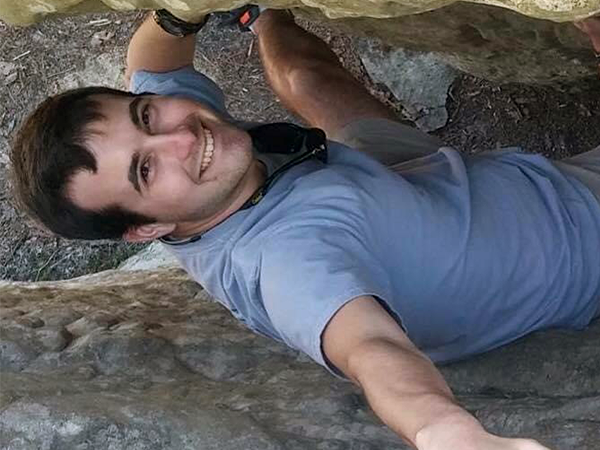By Satina Richardson
Jacob McKinstry’s mother recognized there was an issue with her son’s learning when his participation in three- and four-year-old kindergarten decreased. The school principal said he had ADHD, which wasn’t confirmed. He took a battery of tests that included an IQ test, an auditory test and two exams by ophthalmologists. Each test found no significant issues. His mother continued to research what could be happening with her son. Two and a half years later, following a Visual Efficiency Evaluation, vision therapy was recommended.
McKinstry began vision therapy at age six. His mother drove five hours one way for nine months once per week to UAB Eye Care so her son could receive vision therapy. Fast forward 15 years. This year, he graduated with honors from UAB with a bachelor’s degree in biomedical sciences and a minor in chemistry. McKinstry is now earning a computer science minor and will either be applying for a master’s program in computer science or applying to law school.
“[Without vision therapy] I probably would not have graduated from college,” he says.
What is vision therapy?
Vision therapy involves a combination of weekly in-office and home eye exercises to retrain the visual system to work more efficiently and accurately to relieve symptoms. The exercises involve the use of lenses, prisms, eye patches and other instruments to teach better control of eye focusing and coordination.
“Oftentimes we get kids in VT when their eye doctor notices an eye teaming or focusing problem during the patient’s routine eye examination,” says Kristine Hopkins, OD, an optometrist at UAB Eye Care. “Sometimes it’s a teacher or a reading specialist that notices a child is using his finger to keep his place or he’s rubbing his eyes and straining to see the print.”
Sometimes we’re the ones picking up the problem during the exam in our clinic. Sometimes parents don’t realize their child is struggling with these issues, they just think their child ‘hates’ reading and battles over homework ensues.”
The therapeutic process treats conditions like convergence insufficiency (CI), outward eye turns (exotropia), poor near focusing (accommodative insufficiency), poor visual tracking skills (ocular motor dysfunction), amblyopia and many others. Vision therapy does not cure learning disabilities, however, vision therapy can improve focusing, eye teaming, and tracking removing visual obstacles to learning and reading.
Vision therapy used at UAB Eye Care’s Vision Therapy Clinic is based on studies supported by the National Institutes of Health and other research results, in addition to the clinical expertise of residency-trained doctors.
McKinstry recalls that vision therapy was fun and entertaining. Hopkins led his treatment. Then resident, Ann Wonderling, OD, FCOVD, now a Vision Therapy Academy optometrist, also worked closely with him during his sessions. She fondly remembers McKinstry and explains that it is important to make sure sessions for young patients aren’t intimidating.
“When a child is in vision therapy, most of the time reading and other areas of academics have been a struggle,” Wonderling says. “Making patients feel safe and comfortable while having fun is key to the success of vision therapy.”
She says it is important to explain vision therapy’s benefits in ways that are relatable. For instance, a musician will help keep better rhythm. Basketball players who work on eye teaming improve shooting. A gymnast’s balance will improve.
McKinstry went from not being able to read, to reading above grade level in nine months. Reading is one of his favorite activities to this day.
“It was awesome to hear him eagerly share his reading successes with us,” Hopkins says.
Vision therapy isn’t only for children
Vision therapy is for people of all ages. Many adults are referred to vision therapy by their eye doctor, a neurologist, physical therapist or others on their rehabilitation team after a brain injury such as a stroke or concussion.
There are several indicators that vision therapy could be needed:
- If someone has already had a dilated eye exam for glasses but is still having symptoms of eye strain, headaches, double vision, or blur with reading and near work; and
- If someone has developed visual symptoms following a mild traumatic brain injury or concussion.
If there hasn’t been a routine dilated eye exam, it’s important to do this first. An updated glasses prescription could be helpful or there may be an eye health problem that is affecting vision. If the doctor detected an eye teaming or focusing problem during an exam or if symptoms continue even with new glasses, there may be an eye muscle problem that would benefit from therapy.
